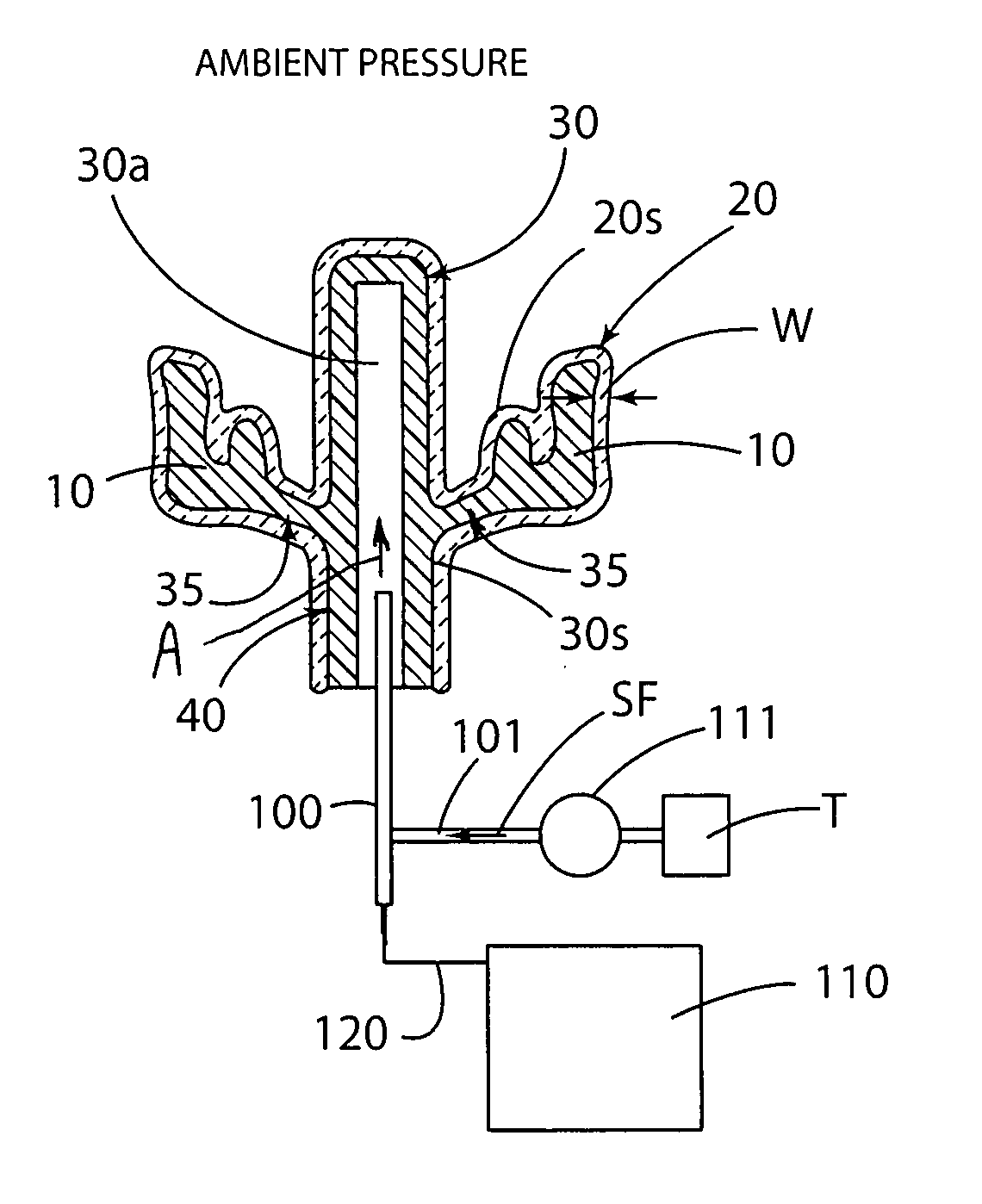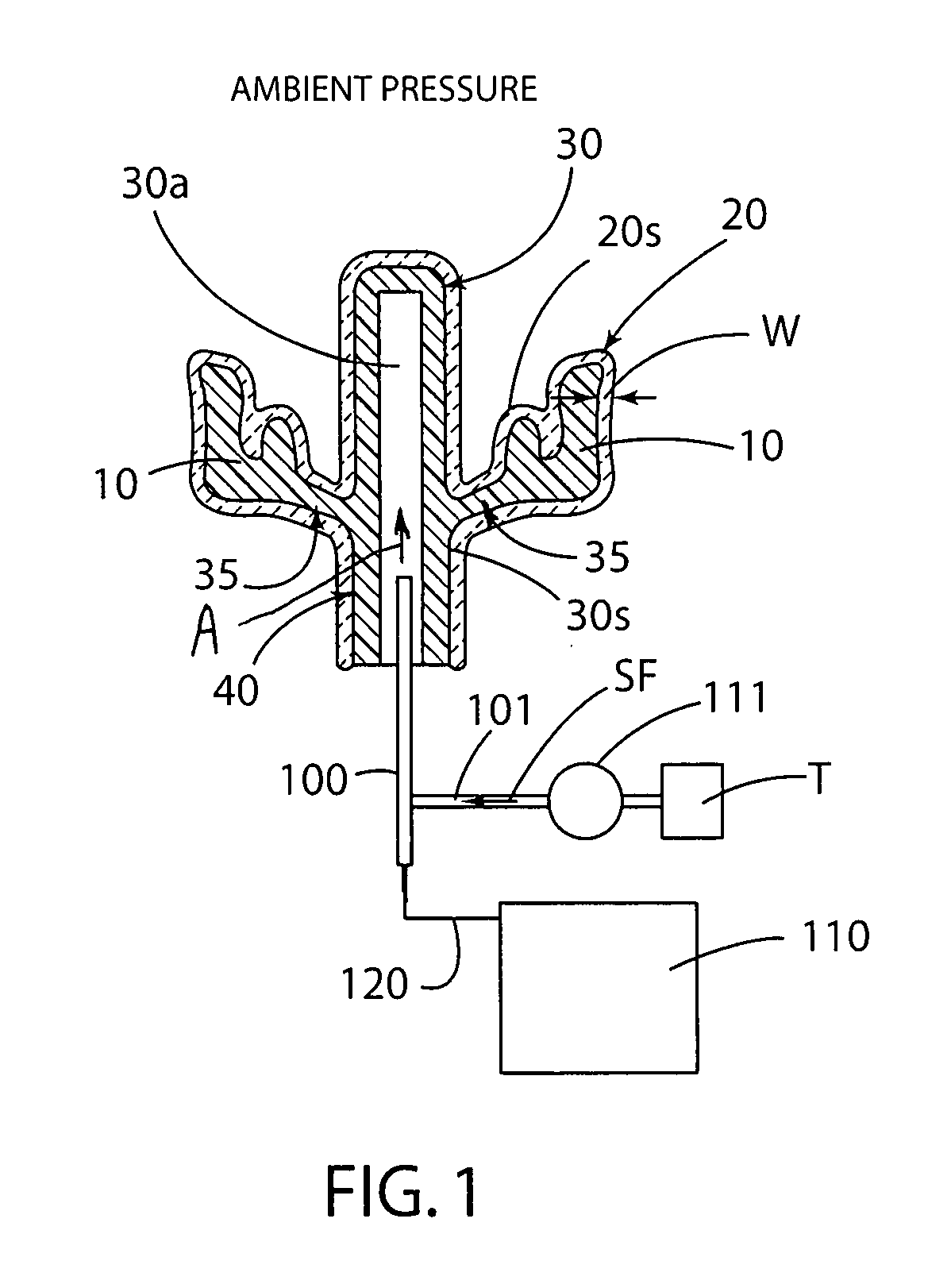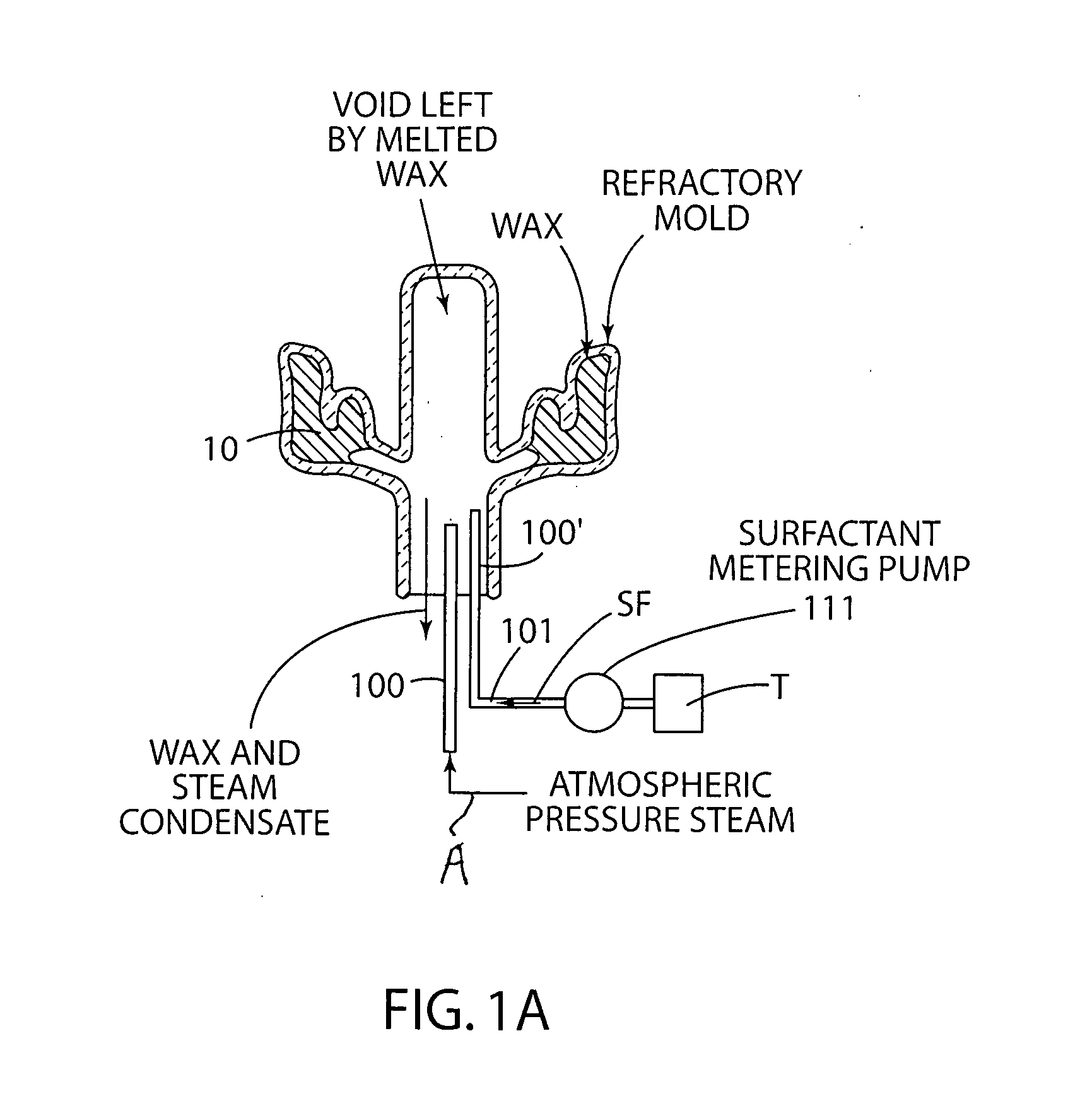Method and apparatus for removing a fugitive pattern from a mold
a technology of metal casting mold and fugitive pattern, which is applied in the direction of metal-working apparatus, foundry patterns, foundry moulding apparatus, etc., can solve the problems of cracking the mold, non-uniform heating of the pattern, and the refractory shell mold is under tension, so as to improve the draining of the melted pattern material, improve the draining effect, and reduce the surface tension
- Summary
- Abstract
- Description
- Claims
- Application Information
AI Technical Summary
Benefits of technology
Problems solved by technology
Method used
Image
Examples
Embodiment Construction
[0029] The present invention improves upon the method and apparatus for removing one or more fugitive patterns residing inside of a refractory mold as disclosed in copending patent application Ser. No. 10 / 899,381 filed Jul. 26, 2004, the disclosure of which is incorporated herein by reference. In particular, one embodiment of the present invention involves method and apparatus for removing one or more fugitive patterns residing inside of a refractory mold by introducing a condensable vapor that includes a surfactant inside the mold. The condensed vapor and the melted pattern material are drained out of the mold. The surfactant lowers the surface tension of the condensed vapor in contact with the fugitive pattern inside the mold and increases the ease at which the melted pattern material flows over the freshly exposed mold interior surface to improve draining of the melted pattern material out of the mold, leaving less residual pattern material on the mold surface.
[0030] The method ...
PUM
| Property | Measurement | Unit |
|---|---|---|
| temperature | aaaaa | aaaaa |
| thickness | aaaaa | aaaaa |
| surface tension | aaaaa | aaaaa |
Abstract
Description
Claims
Application Information
 Login to View More
Login to View More - Generate Ideas
- Intellectual Property
- Life Sciences
- Materials
- Tech Scout
- Unparalleled Data Quality
- Higher Quality Content
- 60% Fewer Hallucinations
Browse by: Latest US Patents, China's latest patents, Technical Efficacy Thesaurus, Application Domain, Technology Topic, Popular Technical Reports.
© 2025 PatSnap. All rights reserved.Legal|Privacy policy|Modern Slavery Act Transparency Statement|Sitemap|About US| Contact US: help@patsnap.com



